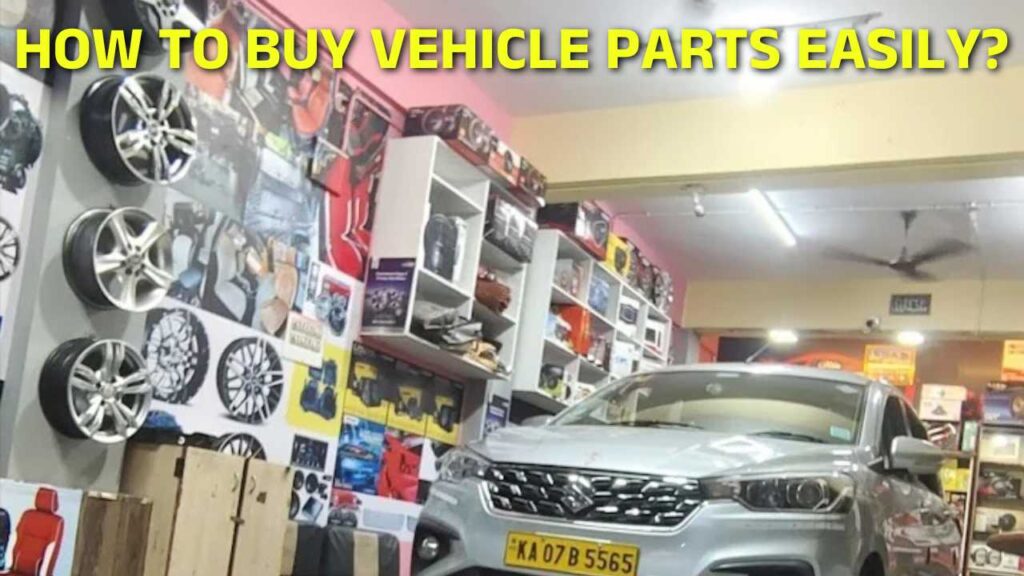Purchasing vehicle parts can seem daunting, but with a structured approach, it becomes straightforward. This guide breaks down the process into manageable steps, ensuring you find the right parts efficiently and confidently.

1. Identify the Correct Part
Know Your Vehicle Details
Start with your Vehicle Identification Number (VIN), found on the dashboard or driver’s side door. This 17-character code reveals specifics like engine type and manufacturing year, crucial for part compatibility. Cross-reference this with your owner’s manual for part numbers and diagrams.
Inspect the Existing Part
If replacing a part, examine it for numbers or labels. Take photos or notes on dimensions and connections. For example, a brake pad might have a “D1542” code. Use tools like VIN decoders (e.g., DecodeThis) or forums (e.g., Reddit’s r/MechanicAdvice) for clarity.
Consult Professionals
Local mechanics or dealerships can identify parts. Describe symptoms (e.g., “grinding noise when braking”) for targeted advice. Autozone’s free diagnostics can also pinpoint issues.
2. Understand OEM vs. Aftermarket Parts
OEM (Original Equipment Manufacturer)
OEM parts are made by your vehicle’s manufacturer, ensuring perfect fit and reliability but at a higher cost. Ideal for critical components like transmissions or sensors.
Aftermarket Parts
These are cheaper alternatives from third parties. Brands like Bosch (electrical) or KYB (suspension) offer quality. Use them for non-critical parts like mirrors or cabin filters. Check certifications (e.g., CAPA for body parts) for assurance.
3. Where to Buy
Dealerships
Best for OEM parts under warranty. Use websites like GM Parts Direct for discounts.
Local Auto Stores
Stores like Autozone or O’Reilly offer immediate pickup and expert advice. They often provide free installation for simple parts like wiper blades.
Online Retailers
- Amazon/ eBay Motors: Use fitment filters and reviews.
- RockAuto: Extensive catalog with competitive pricing.
- CarID: Customizable options for accessories.
Specialty Shops
For performance parts, consider JEGS or Summit Racing. Salvage yards (e.g., Car-Part.com) offer used parts at lower costs.
4. Online Buying Tips
Use Compatibility Tools
Websites like Advance Auto Parts have “Garage” features to save your vehicle profile. eBay Motors’ compatibility checker ensures fitment.
Verify Seller Reputation
Check reviews and ratings. For example, a seller with 98% positive feedback on eBay is reliable. Avoid listings with stock photos; request actual images.
Leverage Customer Support
Chat with support to confirm details. Provide your VIN for verification.
5. Price Comparison Strategies
Aggregate Sites
Use Google Shopping or PartsPal to compare prices across retailers. Include shipping costs—sometimes a higher-priced item with free shipping is cheaper overall.
Consider Refurbished/Used Parts
Sites like LKQ offer warranties on used parts. Ensure critical components (e.g., alternators) are tested.
Seasonal Discounts
Black Friday or holiday sales on sites like AutoZone can save 20-30%. Sign up for newsletters for exclusive coupons.
6. Ensure Quality and Authenticity
Check Certifications
Look for ISO or CAPA certifications. For example, Meyle is known for durable suspension parts.
Warranty and Returns
Opt for parts with at least a 1-year warranty. Retailers like NAPA offer 90-day returns, ensuring peace of mind.
Avoid Counterfeits
Purchase from authorized dealers. If a deal seems too good (e.g., a $50 OEM headlight vs. the usual $200), it’s likely fake.
7. Making the Purchase
Secure Payment Methods
Use credit cards or PayPal for buyer protection. Avoid wire transfers or gift cards.
Double-Check Details
Confirm shipping address and part numbers. Track orders via apps like Shop to anticipate delivery.
8. Installation and Post-Purchase
DIY vs. Professional Help
YouTube tutorials (e.g., ChrisFix) guide simple tasks like battery replacement. For complex jobs (e.g., timing belts), hire a certified mechanic via platforms like YourMechanic.
Keep Records
Store receipts and warranty documents digitally (e.g., Google Drive). Note installation dates for future reference.
Utilize Warranties
Register the part online if required. Contact the seller promptly if issues arise—most retailers offer replacements within the warranty period.
Conclusion
Buying vehicle parts easily hinges on preparation and research. Identify the part accurately, compare options across trusted platforms, and prioritize quality and compatibility. Whether opting for OEM or aftermarket, online or in-store, this structured approach saves time and money. Always verify seller credibility and keep documentation for post-purchase support. With these steps, you’ll navigate the process confidently, ensuring your vehicle remains in top condition.
Checklist for Success:
- VIN and part numbers on hand
- Budget set with price comparisons
- Seller reviews and return policies verified
- Payment method secured
- Installation plan (DIY/professional)
By following this guide, you streamline the purchasing journey, turning a potential headache into a hassle-free task.
